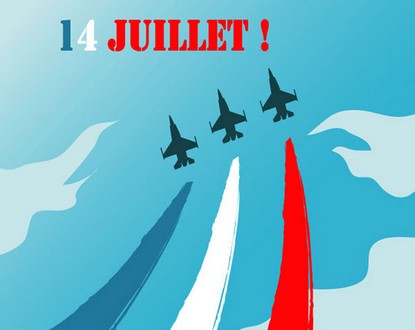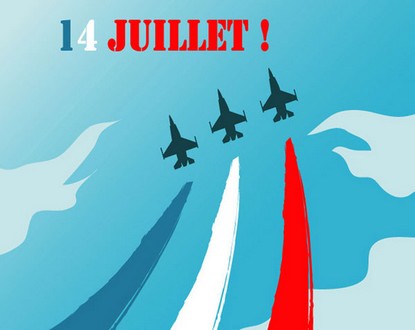Three Alphajets are on the agenda for the commemorative ceremony of the National Day this Monday, July 14, starting at 5:30 PM in front of the Centenary Monument, on the Promenade des Anglais in Nice.

The evening will continue at 8 PM with a Prom’ Party and a traditional fireworks display at 10 PM. Numerous traffic restrictions are expected around the Promenade des Anglais.
French National Day since 1880, July 14 commemorates in the collective memory the storming of the Bastille in 1789. But historically, it is a lesser-known event that is celebrated: the Feast of the Federation in 1790.
The National Day first commemorates July 14, 1789, the first revolutionary day with symbolic significance. And this day, which marks the beginning of the Revolution, will remain in the memories as a day of freedom.
However, the National Day also refers to another lesser-known event: the Feast of the Federation on July 14, 1790.
The ceremony is meant to celebrate the storming of the Bastille, but also to bring a semblance of order and unity in a country in crisis. On the said day, 14,000 federated soldiers arrived in Paris and paraded under the banner of their departments, from the Bastille to the Champ-de-Mars.
1880: July 14 becomes a national holiday For nearly a century, the commemoration of July 14 was discontinued. It reappeared in 1880, under the Third Republic. This is how the Marseillaise became the official anthem and July 14 the national holiday. The Minister of the Interior instructed the prefects to ensure that this day “is celebrated with as much splendor as local resources allow.” A military parade was organized, still in effect today, also inspired by the parade of federated guards in 1790.
From 1880 to the present day
In 1886: a woman, a canteen worker with the 131st Infantry Regiment, paraded for the first time.
In 1915: the military parade moved from the Champ-de-Mars to the Champs-Elysées.
In 1919: it was the Victory Parade that brought together, on the Champs-Elysées, the forces of the allied countries.
In 1936: after the military parade, a million people marched at the call of the trade unions.
From 1939 to 1945: in occupied Paris, the day was not celebrated. On July 14, 1940, in London, General de Gaulle reiterated his calls for resistance.
In July 1945, the Liberation was celebrated throughout France.



